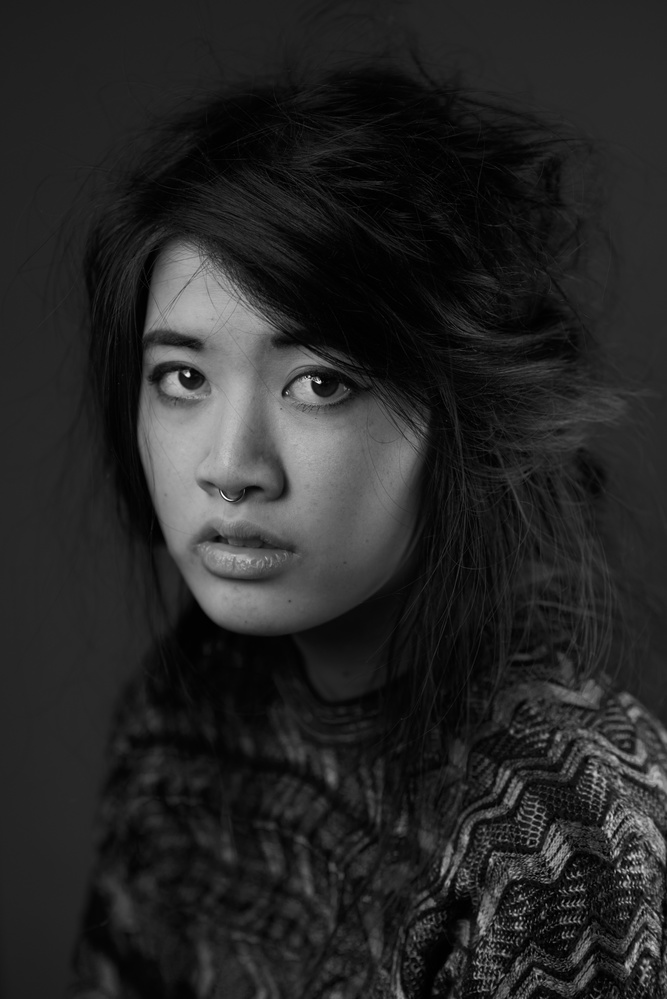Lumopro has had several flashes on the market, like the LP160 and the wildly popular LP180 of Strobist fame. This fall, however, Lumopro announced a brilliant new unit, the LP180R. As far as specifications, the LP180R is almost identical to the LP180, but there is one key difference that makes it an excellent tool for photographers both experienced and inexperienced.
The LP180R makes use of Phottix’s Odin wireless trigger system. The Odin, for those that aren’t familiar, is a TTL-enabled (through the lens metering) trigger. This means that any flash that is Canon, Nikon, or Sony can be used off-camera in a totally automatic way. For wedding photographers, this is an invaluable tool. Past the automatic mode, the flash can be utilized in a fully manual way, which will allow for more control that portrait, sport, and product photographers will often look for. TTL also enables functionality such as high-speed sync and second curtain sync for even more creative possibilities.
One feature to keep in mind, and I haven’t had an issue with this as a portrait photographer, is that the flash is not physically mounted for any one brand. The hot shoe has just a single firing pin, rather than the configuration that you see on Canon and Nikon units, which means you are not able to use TTL when the flash is mounted on the camera. This is not necessarily an issue, just something to be aware of if you like to have a flash on the camera.
The LP180R also has several ways of being triggered aside from the built-in Odin receiver. There is the hotshoe, a PC port, a miniphone plug, which is far more common for low end triggers, and an optical slave on the front of the unit. This gives the flash great versatility, as it can be triggered by virtually any camera. For people like myself that shoot both film and digital, this is a big bonus, as many film cameras are very basic in their flash functionality.
Let’s get back to high-speed sync, because I feel like this is an important feature of this flash. With most Canon and most Nikon cameras (not 3xxx and 5xxx cameras), the LP180R will sync as fast as 1/8000th of a second. The beauty of this is the ability to basically remove neutral density filters from my camera bag. Ambient light can be much more easily controlled, resulting in a quicker workflow on set. With unlimited syncing speed comes one somewhat frustrating caveat, however. Due to the nature of high-speed sync and its relationship with focal plane shutters, the power is greatly reduced as you go higher into your camera's available shutter speeds. This is not a fault of the LP180R, rather an issue of electronics and science. The only way to beat this is to use a camera with a leaf-shutter, such as the Fuji X100T series cameras or basically anything with a sensor/film larger than full frame. I even run into this issue with the beloved Profoto B1. Yes, it’s unfortunate, but there are ways around the power decrease of high-speed sync. Modern cameras do so well at high ISOs that cranking the ISO from 100 to 800 isn’t going to hurt your image quality much.
The interface of the LP180R is also a home run. I’m not a huge fan of the complex menus within most speedlights. The LP180R doesn’t really have a menu at all. Every function can be accessed by pressing or holding the "mode" or "set" button on the flash. Each function is also displayed on the screen at all times, making it easy to see what is or isn’t activated. Most of this is also shown on the Odin transmitter, so you don’t even need to see the flash to make adjustments. This means quicker shoots and a lot of time saved (trust me, it adds up).
With the shot above, I was able to turn off the background light with a few button presses. This changed the mood of the photo and I didn't even have to leave my seat.
An issue that is prevalent with many third-party flashes is build quality. The LP180R does not suffer from this at all. The flash is contained in a thick plastic housing that feels very rugged. Having dropped a few Lumopro flashes, I can say that they’re certainly up to snuff with name-brand flashes.
Portability is key for a lot of photographers. The almost legendary B1 from Protofo is great, but it still requires its own case in most instances. The LP180R is small enough to fit in most backpacks. When you factor in light stands and modifiers, it is likely that you will need a second bag, but at least that second bag will hold your whole lighting kit and not just one light. If I only have one assistant or if I’m working alone, this is a big deal. The flashes are easier to deal with and are far lighter than monolights. Another nice feature is the built-in gel sheet holder for the color gels that come packaged with the flash. Gels can be a great addition to anyone's kit. Having it built in just opens space in your bag. 
There is one final and important piece of information to mention about the LP180R: the price. At $229, they are an excellent value. When you factor in the robust build and wonderful feature set, it gets even better. What the LP180R gives you is versatility, because it will do just about anything you ask it to. For on-location work, it is a solid performer. With the price comes the ability to have about four of them for the cost of two brand name flagship flashes. This allows for some more complex setups, like the beauty shots seen above. Usually, four light setups are prohibitively expensive. This allows for experimentation or extra power if you cram multiple units into one modifier. If I have one complaint, it is power. I wish it had a little more, purely for macro work. Outdoors, I have not been in any situation where I found it to lack enough power. At small apertures like f/16, however, it starts to become an issue. All speedlights are relatively limited in their potential power, mostly because of size constraints, so I won’t blame it entirely on the LP180R. A power rating closer to the SB-910 would be nice, however. 
What I liked:
- Incredibly easy to use
- Great versatility
- Good size
- Priced perfectly, making the unit one of the best investments you can make for your photography
What I didn't like:
- I'd like more power sometimes, but it's enough for 90% of the situations I find myself in.
- The built in gel holder doesn't hold the sheets very tightly.
Overall, the LP180R is an amazing flash. It has a variety of useful features that make it a great choice for beginners, photographers that need to stay portable, or those looking to create complex lighting setups without spending $10,000 or more. When you add in the wireless control into the mix, it becomes an intuitive and easy-to-use flash for just about any application. The Lumopro LP180R will likely see a place in my bag for a long time to come.







would this be capable of hss on a sony e-mount camera like the a6000?
Are you sure that off-camera TTL works with Sony cameras?
Is Sony compatibility that bad? :-D
I'm not sure what you mean. I'm referring to LP180R marketing materials only mentioning Canon + Nikon TTL compatibility, but here it is noting that it works in TTL with Sony. Looks like Spencer answered my question below.
Well, I've seen similar comments before about this, so I'm assuming there's something about the Sony setup that is non-standard. Someone once mentioned something about a holdover from the Minolta system, is that what it's about?
The Sony A-Mouny DSLR cameras have a hotshoe that isn't compatable with any flash that isnt meant for that shoe. As far as E-Mount cameras are concerned, almost any flash or trigger can be mounted but very few have TTL support. This means that there are hardly any high speed sync or second curtain sync capable flashes for those cameras, thus limiting their off camera flash abilities. They're stellar cameras but that is their one big weakness at the moment. I hope that helped!
Hmm, I think that is indeed a Minolta holdover, although I'm not entirely sure. Minolta also had a proprietary shoe.
"Modern cameras do so well at high ISOs that cranking the ISO from 100 to 800 isn’t going to hurt your image quality much."
As long you expose to the right. This is especially so with Mk IIs and Mk IIIs, which are surprisingly noisy, even at base ISO, at anything under 50% density. Nikons and Pentax (and probably modern Sonys) give you lots more leeway.
The bane of my 5D III-owning existence. ;)
Hi Spencer, can you please confirm your source on the Odin Sony compatibility. Directly from the Lumopro website, they specifically only mention Nikon and Canon Odin compatibility for the LP180R. I got excited for a moment when I read your first few paragraphs, but after looking it up on the Lumopro website, I'm not sure anymore...
I was referencing the Odin system, as Phottix does manufacture the transmitter in the sony/minolta configuration. The LP180R does not currently have Sony support built in.
Most product reviews typically include a photo of the product as well...
That's actually the 1st thing that came to mind. Yes, there is a link, but then that kinda defeats the visual review purpose. Kinda upsetting actually. All those pics but not how they were made. =\
Does the HSS work on Nikon? Manual doesn't show it.
It does on most Nikon bodies. The reason that it doesn't say so, is mostly because the low end (D3xxx/D5xxx) cameras don't usually have HSS capability. Anything D7xxx and up is good to go!